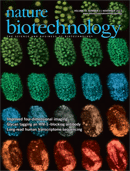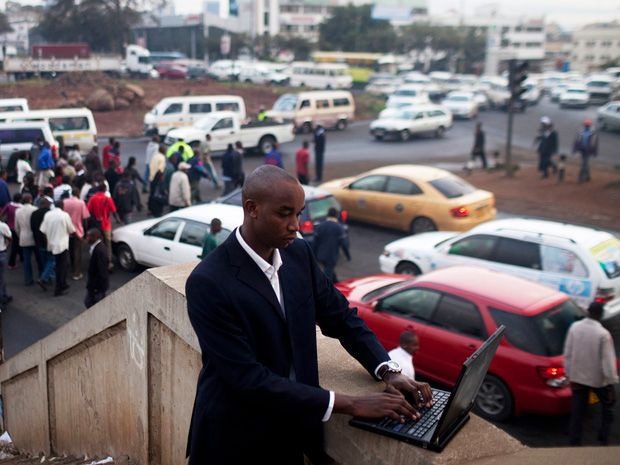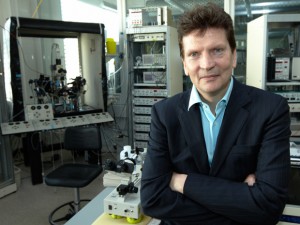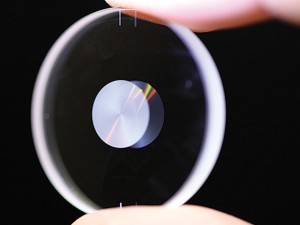 On September 18, former Traversa Therapeutics CEO Hans Petersen went on a shooting spree. One of two people wounded was molecular biologist Steven Dowdy, a professor at University of California San Diego (UCSD) School of Medicine, in La Jolla, and cofounder of Traversa, according to a San Diego police report. Continue reading UCSD researcher shot by cofounder
On September 18, former Traversa Therapeutics CEO Hans Petersen went on a shooting spree. One of two people wounded was molecular biologist Steven Dowdy, a professor at University of California San Diego (UCSD) School of Medicine, in La Jolla, and cofounder of Traversa, according to a San Diego police report. Continue reading UCSD researcher shot by cofounder
Category Archives: News
IBM Nairobi Lab’s First Offering is a Traffic-Dodging Mobile App

Debates about how best to avoid Nairobi traffic can take nearly as long as a drive across town. The city has three dozen traffic cameras downtown, but that’s not enough information for a city of over three million people. Traffic costs the city US $600 000 a day, by one estimate. IBM’s Nairobi lab, in beta since a year ago, tackled traffic early on and today launched a mobile application to help drivers avoid traffic. Continue reading IBM Nairobi Lab’s First Offering is a Traffic-Dodging Mobile App
Human Brain Project Needs Artificial Brains to Understand Real Ones
 If neuroscientist Henry Markram had a dollar for every neuron he wants to map, he still wouldn’t have enough money.
If neuroscientist Henry Markram had a dollar for every neuron he wants to map, he still wouldn’t have enough money.
As it happens, the Swiss Federal Institute of Technology in Lausanne (EPFL) researcher has a billion euros, or $1.38 billion, from the European Union to spend over the next ten years, but the normal means of determining a neuron’s activity can cost $1 million and take a year. By the time he got through the 3000-odd pathways shown in the photograph of a pinhead-sized slice of brain behind him in a conference room last month, he’d be flat broke, decades older, and he’d still have to map countless more pinheads’ worth of neurons to understand the brain. Continue reading Human Brain Project Needs Artificial Brains to Understand Real Ones
Data for the 31st Century
 Computer scientist Peter Kazansky at the University of Southampton, in England, has some words for the ages. He and a group of collaborators wrote them in quartz crystal using new optical techniques that could preserve the text for millennia. The message, which consisted of the abstract of the paper announcing the work, is stored as two types of alterations in the way quartz glass refracts light. The combination of the two allows for data-storage densities as high as 360 terabytes per disc, or more than 7000 times today’s 50-gigabyte double-layer Blu-ray capacity.
Computer scientist Peter Kazansky at the University of Southampton, in England, has some words for the ages. He and a group of collaborators wrote them in quartz crystal using new optical techniques that could preserve the text for millennia. The message, which consisted of the abstract of the paper announcing the work, is stored as two types of alterations in the way quartz glass refracts light. The combination of the two allows for data-storage densities as high as 360 terabytes per disc, or more than 7000 times today’s 50-gigabyte double-layer Blu-ray capacity.
There’s always a catch, though. Reading the message requires an electron microscope, and the process may never provide faster access to stored data than existing technology can. This and similar over-the-horizon memory research may someday improve big-data storage, but such systems aren’t an easy fit with today’s data-storage needs, experts say. Improved density and durability are both helpful, but readability and the capacity to rewrite data in a different format might be more important.
Read the rest of this news story in this month’s issue of IEEE Spectrum: [html] [pdf] and see my related blog post.